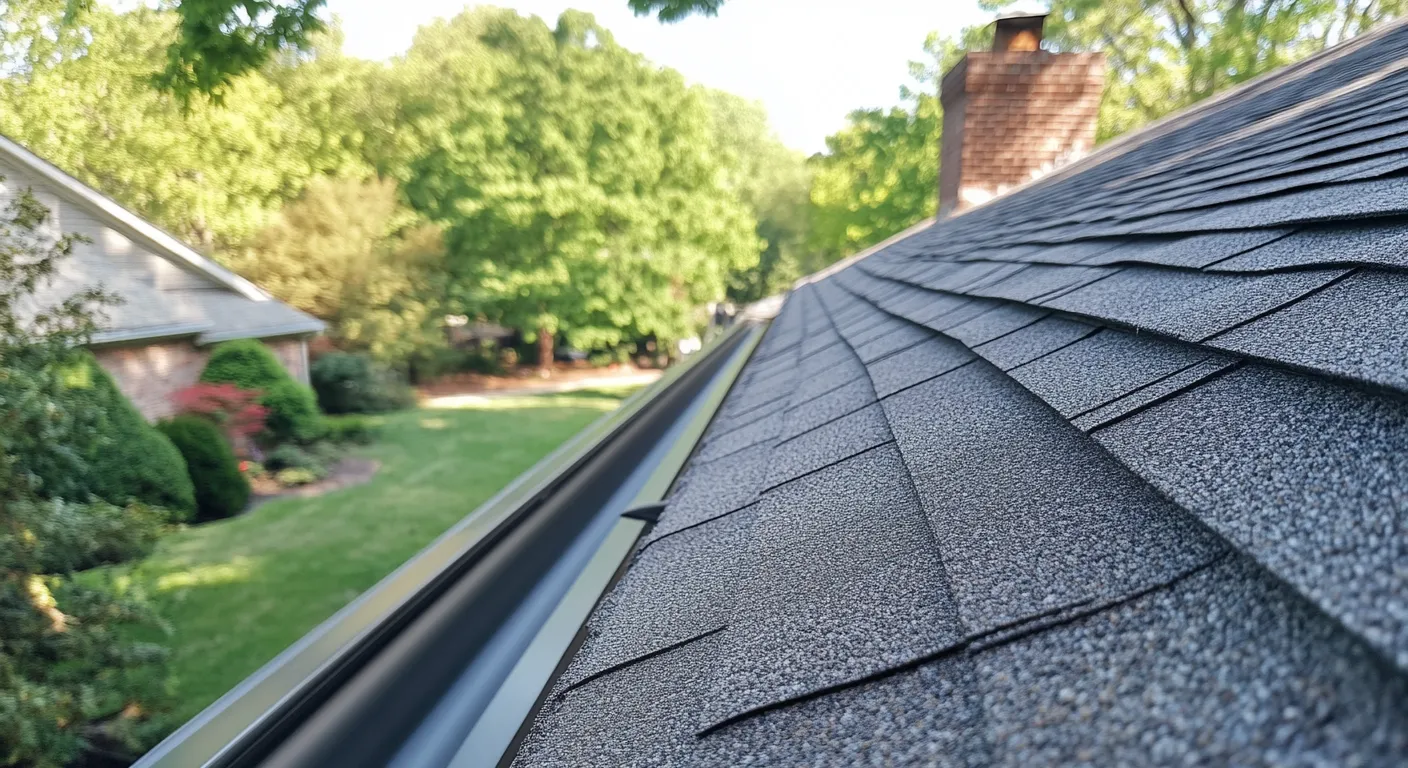Maintaining a well-designed and properly installed gutter system is essential for protecting your home from costly water damage. Selecting the right size ensures efficient water flow, preventing potential issues caused by overflowing gutters. This comprehensive guide from MY Pittsburgh Gutters will help you determine the ideal gutter size for your home, ensuring its long-term protection.
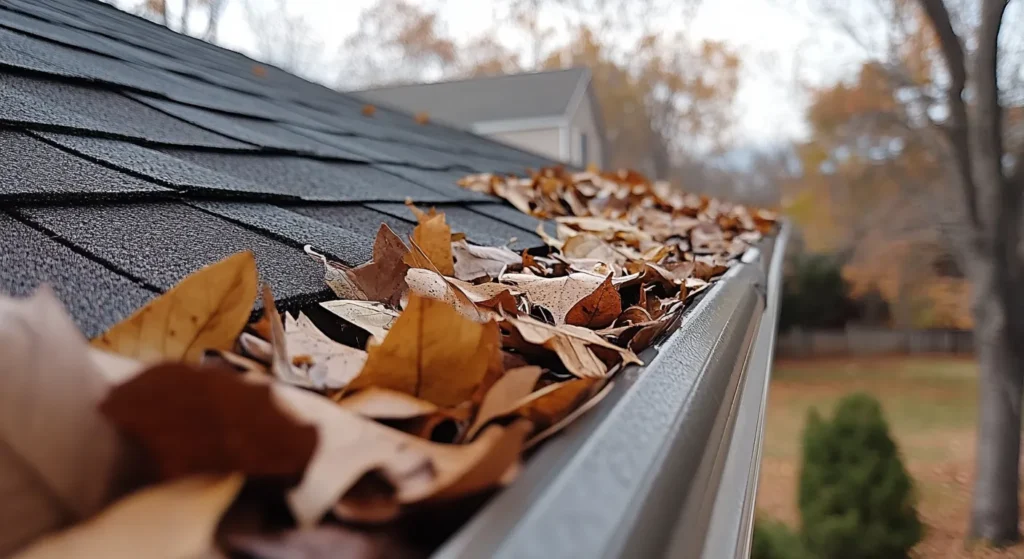
Why Proper Gutter Sizing is Essential for Your Home
A properly sized gutter system effectively channels rainwater away from your home, safeguarding it from a variety of potential problems. Overflowing gutters, often a result of inadequate sizing, can lead to water pooling around your home’s foundation. This excess water can seep into the foundation, causing cracks, compromising structural integrity, and leading to costly repairs.
Beyond the foundation, improper water flow due to inadequate gutter sizing can damage landscaping, erode soil, and even lead to basement flooding. Choosing the right size ensures that rainwater is efficiently channeled away from your home, protecting your investment and providing peace of mind.
Protecting Your Foundation and Landscaping from Water Damage
Water damage can wreak havoc on your home’s foundation and landscaping. Proper gutter sizing plays a crucial role in preventing structural damage. By ensuring efficient water flow away from your property, you safeguard against erosion and maintain the structural integrity of your foundation. Choosing the right size, considering factors like roof area and maximum rainfall intensity, is essential for optimal performance and minimal maintenance. Make the smart choice to protect your home with the right gutter size.
Contact UsPreventing Basement Flooding and Erosion around Your Home
To prevent basement flooding and erosion around your home, choosing the right gutter size is crucial. Proper gutter sizing ensures efficient water flow away from your home’s foundation, preventing structural damage. By considering factors like the maximum rainfall intensity in your area and the size of your gutters, you can mitigate the risk of water damage. Professional installation and regular maintenance further guarantee optimal performance, safeguarding your home against basement flooding and erosion.
Factors Influencing Gutter Size Selection
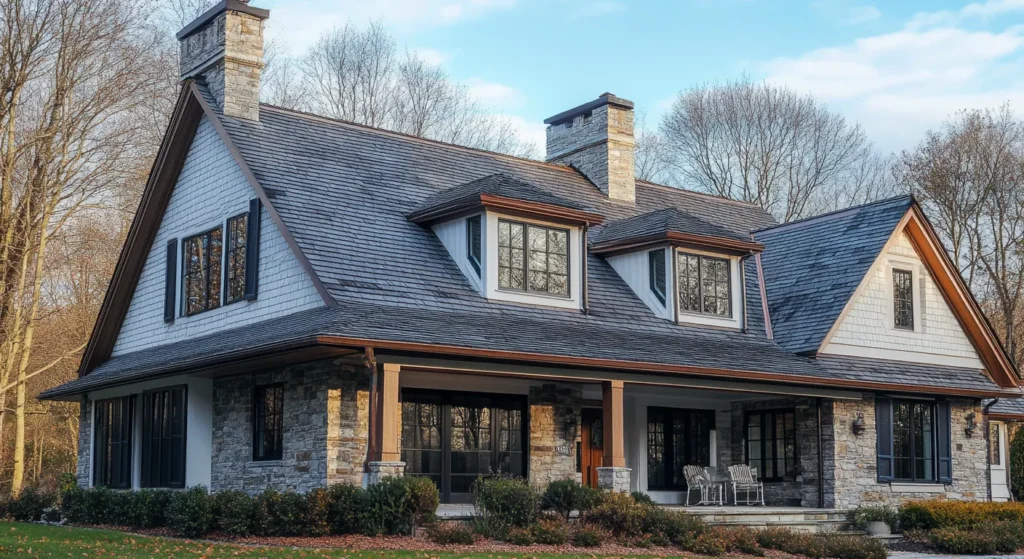
Selecting the right size for your home isn’t a one-size-fits-all approach. Several factors come into play, ensuring your gutters effectively channel rainwater away from your property. These factors help determine the volume of water your gutters need to handle and how quickly that water needs to be moved.
Key considerations include the size and pitch of your roof, as steeper roofs shed water faster, requiring larger gutters to handle the increased volume. Additionally, the amount of rainfall your area receives, particularly the intensity of downpours, impacts your ideal gutter size.
Understanding Roof Size
To determine the right gutter size, consider your roof size’s impact. Larger roofs collect more water, requiring bigger gutters for efficient drainage. Roof area plays a crucial role in selecting the appropriate gutter size to handle water flow effectively. Understanding how the roof size influences sizing is essential for optimal performance and minimal maintenance. Matching gutter size to roof dimensions ensures proper drainage and protects your home from potential water damage.
Call Us (412) 657-8460The Importance of Local Climate and Rainfall Patterns
Beyond your home’s structural features, your local climate and rainfall patterns heavily influence the sizing of your gutter system. Regions prone to heavy rainfall, particularly intense downpours, necessitate larger gutters to accommodate the increased water volume.
One key metric to consider is the maximum rainfall intensity in your area, often measured in inches per hour. This figure represents the peak rainfall amount expected in your region, providing valuable insight into the capacity your gutters need.
Consulting local weather data or seeking advice from a professional installer can help you determine the appropriate gutter size for your specific geographical location.
Gutter Types and How They Affect Sizing
Gutter systems are not a one-size-fits-all solution. Different types of gutters, each with its unique shape and water-carrying capacity, cater to various house styles and drainage needs. Understanding the different types empowers homeowners to make informed decisions, ensuring their chosen system aligns with their home’s aesthetics and efficiently manages rainwater runoff.
Common types of gutters include K-style gutters, known for their decorative shape, and half-round gutters, offering a more traditional aesthetic. The type you choose can impact sizing due to variations in water volume capacity.
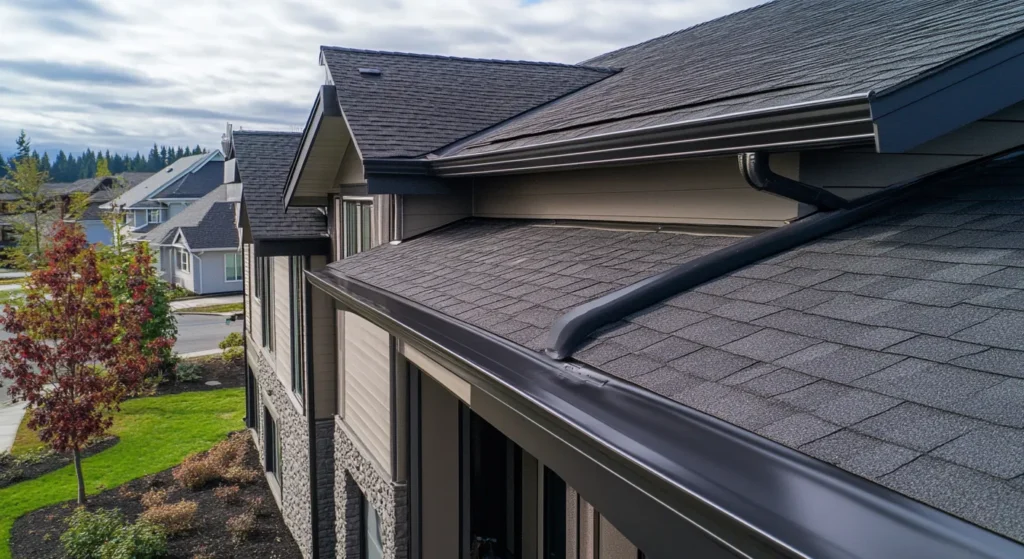
Exploring Seamless, Alcoa, and RainDrop Gutter Guard Systems
When looking into gutter guard systems, considering options like Seamless, Alcoa, and RainDrop is essential. Seamless gutters offer a sleek look without seams, minimizing potential leak points. Alcoa gutters are known for their durability, being made of aluminum or copper. Gutter guards are designed to prevent debris accumulation, ensuring efficient water flow. Each system has its benefits, so choosing one that fits your specific needs is crucial for optimal gutter performance.
The Pros and Cons of Different Gutter Materials
When selecting gutter materials, homeowners often weigh factors such as durability, aesthetics, and cost. Aluminum gutters are a popular choice, striking a balance between affordability and resilience.
Here’s a breakdown of the pros and cons of popular materials:
Aluminum Gutters:
- Pros: Affordable, rust-resistant, lightweight
- Cons: Can be prone to dents
Copper Gutters:
- Pros: Extremely durable, aesthetically pleasing, develops a patina over time
- Cons: Expensive
Vinyl Gutters:
- Pros: Low cost, easy to install
- Cons: Least durable, susceptible to fading and cracking, limited color options
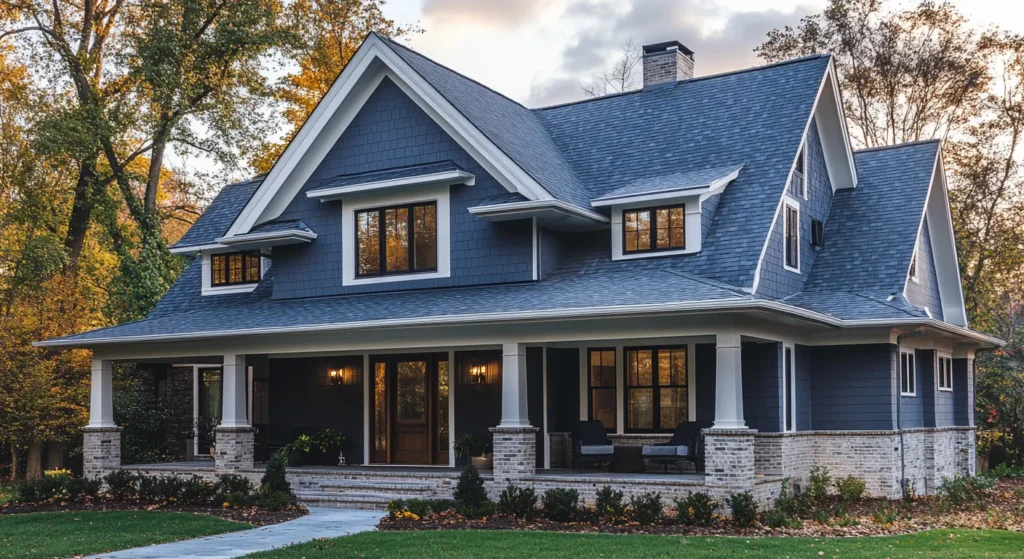
Calculating the Correct Gutter Size for Your Home
Calculating the correct gutter size for your home involves a few key steps to ensure optimal water flow and prevent potential damage. Begin by determining the area of your roof that drains into each section. This involves measuring the length and width of each roof surface and multiplying these dimensions to get the square footage.
Next, factor in your roof pitch, as a steeper roof will shed water faster. Use a roof pitch factor chart to adjust your calculations accordingly. Finally, consider the maximum rainfall intensity in your area, which you can obtain from the National Weather Service.
Step-by-Step Guide to Measuring Your Roof’s Drainage Area
Accurately measuring your roof’s drainage area is crucial in determining the appropriate gutter size. Using a tape measure, measure the length and width of each section of your roof that drains into a specific gutter run. Multiply these measurements, length times width, to determine the square footage of that particular drainage area.
For example, if one section of your roof measures 20 feet in length and 15 feet in width, the drainage area would be 300 square feet. Repeat this process for every roof section that directs water into your gutter system.
How to Factor in Roof Pitch and Downspout Capacity
Roof pitch plays a significant role in how quickly water flows off your roof. A steeper roof, meaning a greater angle, will require a larger gutter size and potentially more downspouts to accommodate the faster water runoff. To determine your roof pitch, you can use a level and tape measure or consult your home’s building plans.
Downspout capacity is another essential factor to consider. The size and number of downspouts connected to your gutters need to be sufficient to handle the volume of water collected. The general rule of thumb is to have one downspout for every 40 feet of gutter. However, larger roof areas or steeper pitches may require additional downspouts.
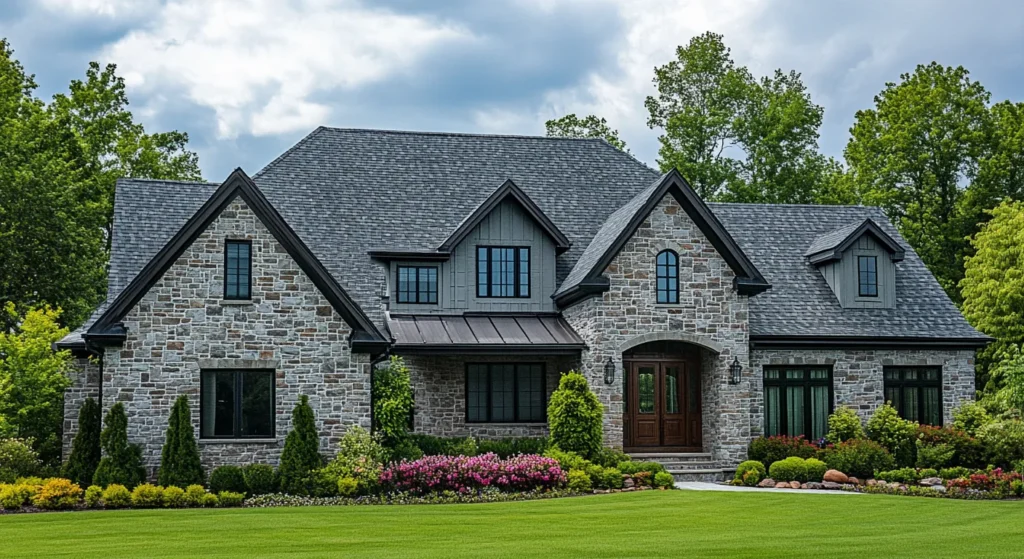
Installation Insights from MY Pittsburgh Gutters
MY Pittsburgh Gutters, a leading provider of gutter installation services, understands the intricacies of choosing the right size and system for your home. Our expertise extend beyond mere installation, encompassing a deep understanding of local weather patterns, roof types, and drainage solutions.
Choosing a professional installer offers peace of mind, ensuring your system is designed and installed to effectively protect your home from water damage. Our team of certified professionals prioritize quality workmanship and customer satisfaction, guiding you through the entire process, from product selection to final installation.
Why Choose a BBB A+ Accredited Business
When entrusting your home’s protection to a gutter installation company, choosing a reputable and reliable service provider is essential. MY Pittsburgh Gutters, a BBB A+ accredited business, embodies these qualities, demonstrating a commitment to ethical business practices, transparent communication, and delivering high-quality work.
Professional installation ensures your gutters are properly aligned, securely fastened, and equipped to handle the water flow from your roof. A BBB A+ accreditation signifies that MY Pittsburgh Gutters consistently meets and exceeds industry standards, providing peace of mind and confidence in their services.
Choosing a reputable company ensures your gutter system provides optimal performance, safeguarding your home and your investment for years to come.
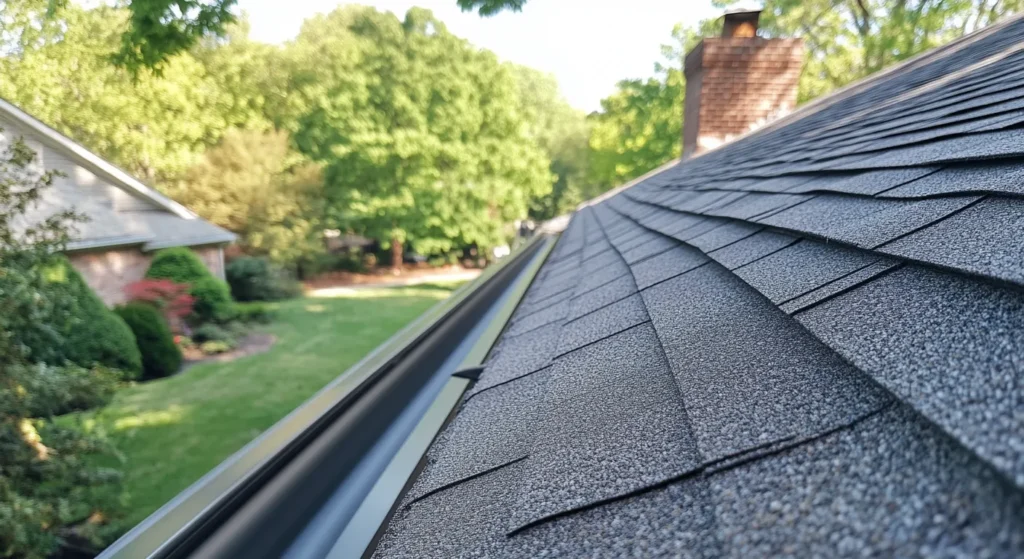
The Benefits of Our Certified RainDrop Gutter Guard Installers
When it comes to the benefits of our certified RainDrop Gutter Guard installers, you can trust in the expertise and precision they bring to your gutter installation process. By opting for professionals, you ensure the optimal performance and longevity of your gutter system. The meticulous installation by our certified team guarantees efficient water flow, minimal maintenance, and protection against debris accumulation. With our certified RainDrop Gutter Guard installers, you can rest assured that your home is equipped with top-notch protection.
Conclusion
In conclusion, selecting the right gutter size is crucial for safeguarding your home against potential water damage. By considering factors like roof size, local climate, and gutter types, you can make an informed decision to protect your foundation and landscaping. Ensure seamless installation by relying on trusted professionals like MY Pittsburgh Gutters, an A+ BBB accredited business. For a hassle-free gutter solution, reach out to our certified RainDrop Gutter Guard installers for expert guidance and installation services. Make the right choice for your home today.
Frequently Asked Questions
Can I install gutters myself, or should I hire professionals?
While some homeowners may possess the skills, it’s recommended to hire a professional gutter installer. Their expertise guarantees proper installation, ensuring efficient water flow and minimizing future issues. They can also assess your home’s specific needs and guide you on the appropriate gutter size and type for your property.
Should I get 5 inch or 6-inch gutters?
The right size depends on factors like your roof’s pitch, square footage, and the amount of heavy rain your area receives. Consulting with a professional can help determine the appropriate size to ensure optimal water flow and prevent overflow.
How do you determine what size gutters you need?
Determining the right gutter size involves considering your roof area in square feet, the maximum rainfall intensity in your region, and the roof pitch. These factors influence the volume of water your gutters need to manage effectively.

